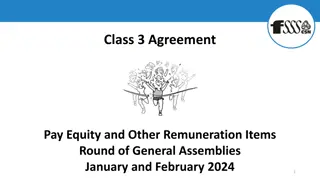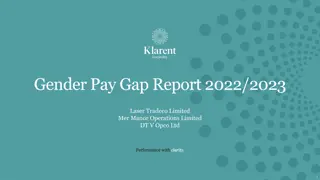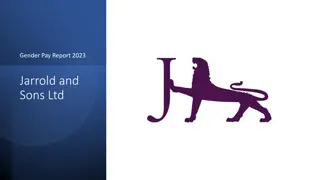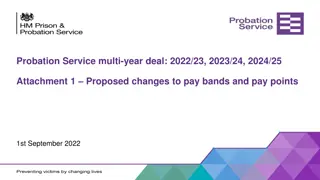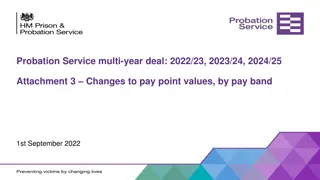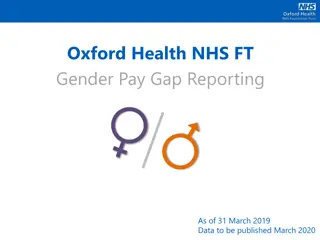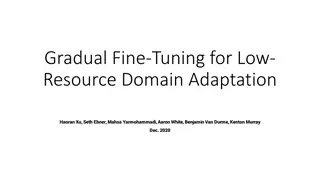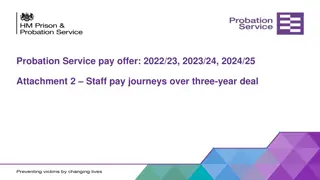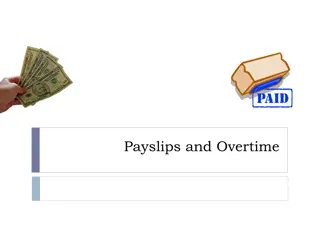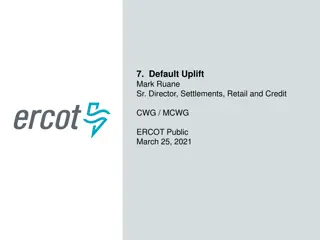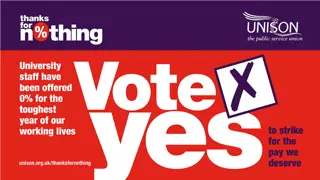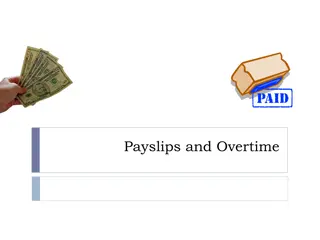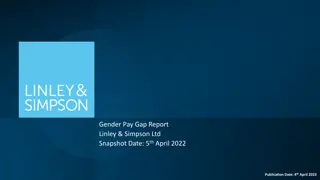Fine Default and Willingness to Pay: Research Insights
Research findings on fine default rates, willingness to pay fines, and factors influencing payment behaviors in New South Wales. The study delves into the impact of fine amounts, detection modes, and socio-economic factors on compliance with driving-related fines.
Download Presentation

Please find below an Image/Link to download the presentation.
The content on the website is provided AS IS for your information and personal use only. It may not be sold, licensed, or shared on other websites without obtaining consent from the author.If you encounter any issues during the download, it is possible that the publisher has removed the file from their server.
You are allowed to download the files provided on this website for personal or commercial use, subject to the condition that they are used lawfully. All files are the property of their respective owners.
The content on the website is provided AS IS for your information and personal use only. It may not be sold, licensed, or shared on other websites without obtaining consent from the author.
E N D
Presentation Transcript
Neil Donnelly, Suzanne Poynton & Don Weatherburn NSW Bureau of Crime Statistics and Research February, 2017
Introduction Fines the most widely used sanction in regulatory toolkit NSW Courts imposed 41,000 fines, 37% of all penalties 476,000 fines for speeding related offences in NSW Fine default 40% speeding related fines not paid before penalty notice due (2014) 22% not paid before reminder notice due 2,600 people charged with driving while suspended for non-payment of a fine 2
Introduction Surprising little theory & research on willingness to pay fines Fine amount Mode of detection Speed camera vs. Police How fine severity and mode of detection influence willingness to pay speeding fines? 3
Research questions 1) What proportion of people (who have received a fine) have not paid it on time or have considered not paying it? 2) Does increasing fine amount for speeding decrease willingness to pay (WTP)? 3) Are police issued fines for speeding associated with higher WTP than camera issued fines? 4) Any interaction between fine amount & mode of detection on WTP? 5) Does fine amount have different effects on WTP for people from more disadvantaged groups? 4
Survey methodology 3,158 adults from NSW 71% CATI (36% response rate) 29% online samples Respondents asked if ever received driving-related fine? Those who had were randomised to hypothetical speeding scenarios which varied mode of detection and level of fine imposed 5
Prior parking or speeding fines Have you received a fine for a parking or traffic offence? Yes, in the past year (n = 587, 18.6%) Yes before past year (n = 1,635, 51.8%) Never (n = 932, 29.5%) 6
Among those who had been fined (n = 2,222): 419 (19%) had not paid their fine on time at least once also 40 (2%) who were not sure about this 910 (41%) had considered not paying the fine at all 7
Factors associated with considering not paying fined during past 12 mths(53% vs 37%) knows a non-payer who got away with not paying (56% vs. 38%) more past speeding fines(none: 33%; one : 44%; two: 56%; 3+: 62%) aged less than 40(47% vs. 38%) males(43% vs. 38%) in paid employment (42% vs. 37%) no relationship with location or socio-economic disadvantage 8
Imagine you are driving along a major road trying to get to an important appointment
Fine amount & detection mode scenarios Fine amount $254 $436 $2,252 Detection mode Speed camera Group 1 Group 2 Group 3 Police Group 4 Group 5 Group 6 10
Scenario examples You are booked by a speed camera and receive a speeding ticket that requires you to pay $254 in 21 days A police officer pulls you over and books you for speeding. The speeding ticket requires you to pay $254 in 21 days How likely are you to pay that fine within 21 days? Likert scale 11
No. of respondents randomly assigned to detection mode & fine amount scenarios Fine amount $254 $436 $2,252 Detection mode Speed camera n = 390 n = 358 n = 346 Police n = 365 n = 369 n = 394 12
Random allocation to six scenarios no statistically significant associations between the six scenarios and: age group; gender region (Sydney vs. other NSW); major city category employment status; socio-economic disadvantage had considered not paying fine prior speeding fines; knows a non-payer who got away with it always paid fine in time recently vs. previously fined sampling frame 13
Fine amount scenario by willingness to pay Almost Unlikely Might or Likely Almost None of certainly might not certain these would not Scenario $254 3.1% 7.3% 8.1% 22.0% 59.3% 0.3% $436 7.0% 12.2% 10.5% 22.8% 46.5% 1.0% $2,252 31.5% 23.8% 12.2% 14.2% 16.6% 1.8% 14
Fine amount scenario as predictor of WTP Poisson regression p value Covariates Incidence Rate Ratio (95% CI) Scenario $436 vs. $254 0.89 (0.84, 0.94) < .001 * $2,252 vs. $254 0.49 (0.46, 0.52) < .001 * 16
Detection mode scenario as predictor of WTP Poisson regression Incidence Rate Ratio (95% CI) p value Covariates Scenario Police vs. Speed camera 1.02 (0.97, 1.08) = .384 18
Fig 3. Fine amount by detection mode (percentage likely or almost certain to pay fine) (%) 100 Speed camera 85.2 Police 77.7 80 69.6 69.1 60 40 34.8 26.3 20 0 $254 $426 $2,252 Fine amount 19
Interaction between fine amount and mode of detection? is the nature of the relationship between fine amount and willingness to pay different between the two modes of detection? no statistically significant interaction found 22 = 4.1, p = .130 final model with fine amount & mode of detection main effects 20
Fine & mode as main effect predictors of WTP Poisson regression p value Covariates Incidence Rate Ratio (95% CI) Fine amount $436 vs.$254 0.89 (0.84, 0.94) < .001 * $2,252 vs. $254 0.49 (0.45, 0.52) < .001 * Detection mode Police vs. Speed camera 1.05 (0.99, 1.10) = .079 21
Effect of fine amount on WTP among disadvantaged groups Socio-economic disadvantage (SEIFA ) quartiles & fine amount no significant interaction Paid employment status & fine amount significant interaction 22 = 6.1, p = .044 22
Fig 4. Fine amount by paid employment status (percentage almost certainly would not or unlikely to pay fine) (%) 100 In paid employment Not in paid employment 80 62.5 60 52.5 40 23.5 17.4 20 12.8 9.5 0 $254 $426 $2,252 Fine amount 23
Summary 20% of those ever fined have not paid the fine in time 40% have considered not paying the fine in time Scenarios Higher speeding fines associated with lower compliance Police issued speeding fines not associated with greater compliance compared with camera issued fines No interaction found between fine level & mode of detection 24
Conclusions Reason to doubt common assumption that higher fines exert stronger deterrent effects Might be worth conducting a cost-benefit analysis of the fine system Court-imposed fines can be adjusted to suit the income of the offender but most fines are not imposed by the courts 25



